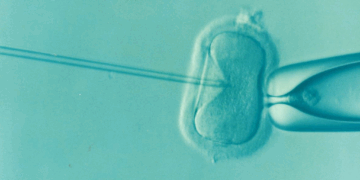It’s a new way to defeat spinal cancer.
A groundbreaking surgery was recently performed on a young woman to remove a complex spinal tumor by accessing it through her eye socket—marking a first in medical history. The 19-year-old patient, Karla Flores, had been suffering from unexplained double vision when doctors discovered a rare bone tumor called a chordoma. The tumor had developed at the base of her skull, surrounding her spinal cord and invading her neck vertebrae.
To safely reach the tumor, surgeons used a minimally invasive method involving an endoscope—a thin, lighted tube equipped with a camera. By accessing the spine through the bottom of the eye socket, the surgical team avoided critical structures like major blood vessels and nerves that control essential functions such as swallowing and speech. This approach, developed by Dr. Mohamed Labib and his team at the University of Maryland Medical Center, provided a direct route to the tumor, minimizing the risks associated with traditional back-entry methods.
Flores, who is now 20, underwent a total of three surgeries. In addition to the spinal tumor, doctors found another chordoma around her brain stem. Two operations were needed to remove that growth: one via an opening in her skull, and the other through her nasal cavity using an endoscope. The innovative technique required collaboration between neurosurgeons and facial reconstructive specialists. Dr. Kalpesh Vakharia, a facial plastic surgeon, delicately created the pathway by removing part of Flores’ eye socket and cheekbone before reconstructing them after the tumor’s removal.
This new surgical method had been extensively practiced on cadavers before being performed on Flores. After the procedures, the medical team used a titanium plate to restore the structure of her eye socket and used bone from her hip to rebuild her cheek. Post-surgery, Flores also received proton therapy to ensure any lingering cancer cells were destroyed. To further stabilize her spine, a neurosurgeon fused the upper vertebrae.
While Flores is recovering well, she continues to experience difficulty moving her left eye due to nerve damage caused by the tumor’s proximity to the brain stem. Still, she remains optimistic and thankful, crediting her persistence and the support of her medical team for her successful treatment. Her story stands as a powerful example of medical innovation and determination in the face of a life-threatening condition.

































Discussion about this post